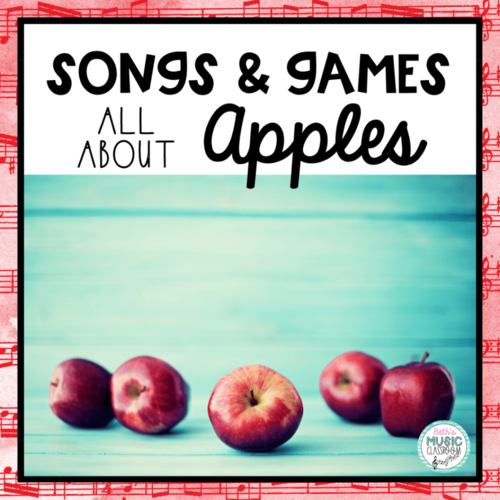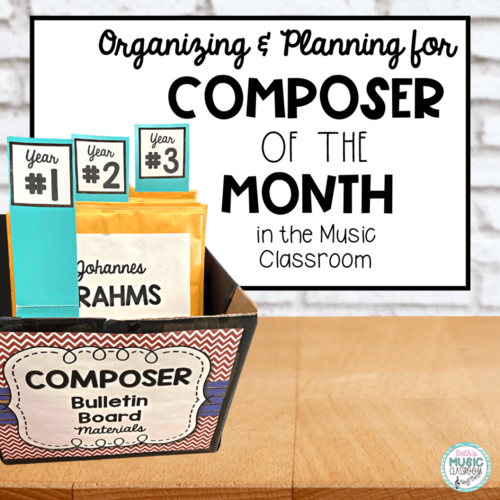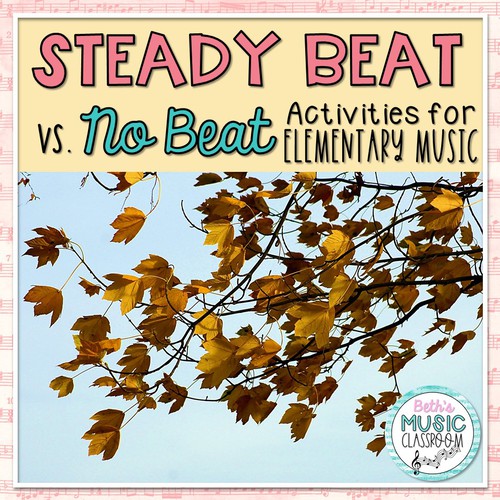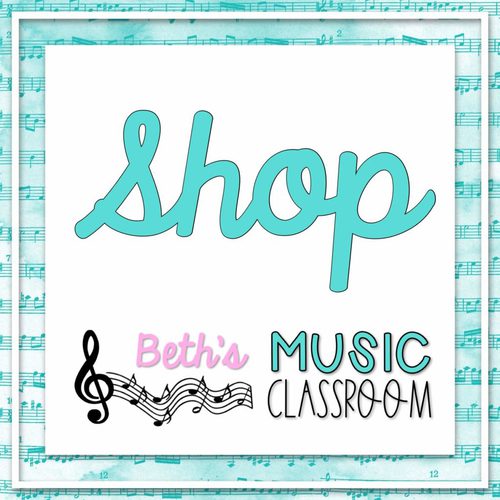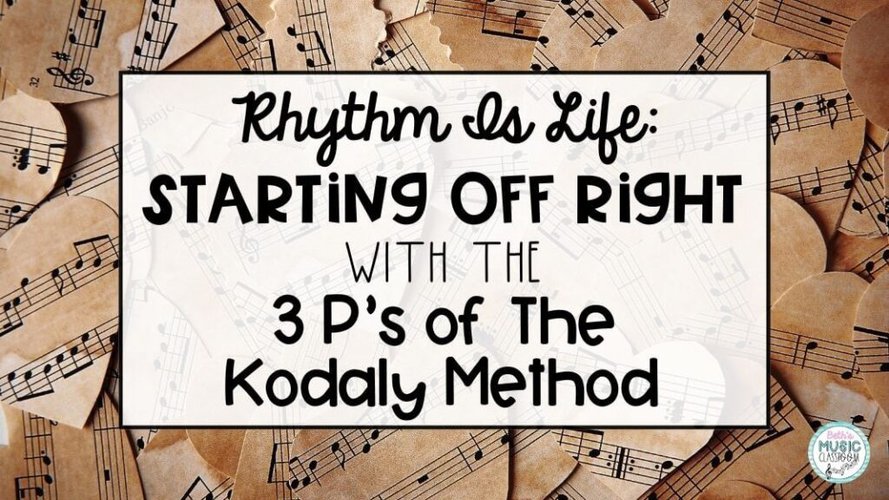
Teaching Rhythm Using the Kodaly Method
Today, I’m kicking off a 3-part series all about teaching rhythm to your youngest students. I will be discussing helpful strategies and tips for using the 3 P’s of the Kodaly method and also for making it simple and real for young children.
I have to start with a quote. One thing about me – I love quotes, and I have quite a few journals filled with quotes about music, teaching, motivation, inspiration, and more.
First, this quote is from Plato: “Music is a more potent instrument than any other for education because rhythm and harmony find their way into the inward places of the soul.” How powerful that is – that rhythm and harmony find their way into our young students. As music teachers, it’s our job to provide children with the experiences that will unlock that power.
Here’s another one by Kodály: “Often a single experience will open the young soul to music for a whole lifetime.” A single experience that may take place in your classroom – whether it be a song, a game or any type of activity – that could open the young soul to music. In our classroom, we teach future music teachers, orchestral members or conductors, or band/choir directors. And even if they don’t become musicians one day, we want them to be lifelong learners and enjoy and be excited about music.
Building a Solid Rhythmic Foundation
In order to get our students enthusiastic and engaged, we must provide them with a solid rhythmic foundation. This is so important, especially at a young age. A solid rhythmic foundation helps children understand patterns and improves coordination and a sense of beat. It also helps them develop literacy skills and rhythmic awareness.
As a kid, I remember learning and hearing from some teachers, “this is a quarter note, these two notes are eighth notes, this is a half note, and so on and so on,” and that didn’t mean a whole lot to me at the age of six years old. In my classroom, I want to make rhythmic reading simple, understandable, and real to my students. I strive to make it come to life for them.
Teaching Rhythm With The 3 P’s
Let’s look at the way we teach rhythm. There are lots of different methods that you can use, however, today I will focus on the Kodály method and the three P’s.
Probably you’ve heard of the Kodály method and maybe you’ve taken your levels in the past. For review, the three P’s to teaching rhythm or melody used often in this method by Zoltan Kodály include:
- Prepare
- Present
- Practice
Prepare
Take a deeper dive into each of those with me. The preparation stage starts with the familiar and builds sequentially. When my kindergarteners really have mastered steady beat, I begin preparing rhythmic reading, but I never actually call it quarter notes or eighth notes. So begins this preparation stage where students learn all about the rhythm without ever calling it by name. The emphasis is on the experience, discovery, and reinforcement. They’re starting with something familiar, moving on from there, and this continual reinforcement will help them be ready for the next stage.
Present
The second stage is the presentation, and it’s really just a moment to “make conscious,” where the knowledge doors are opened. This is where what students already know or have been practicing (with different words) is now presented to the class, but with the real “big kid name.” That’s what I like to call it with my students. They feel special when learning the “big kid name,” and I always do a pretend drumroll right before we get to this presentation – “Drumroll please! Musicians call this rhythm or melody …” and that’s it! The moment is over and the initial practice begins.
Practice
Finally, the practice stage starts, introducing the element in the musical setting. It’s showing what it looks – on the staff, in a measure, or however students will see it in activities centered around this new element – reading, singing, composing, decoding, writing, and more.
Now this all may sound so formal and precise, but add some excitement and spice to your rhythm lessons and students won’t even know they’re learning. So how can we make our rhythm lessons come to life?
Well, you’ll have to stay tuned for next week’s post to get the answer! I have specific tips for the preparation and practice stage with rhythmic activities that you can use with your students all year round. And they won’t even know they’re learning!
Thanks for reading this post, and I hope you can find more music teacher inspiration from other posts. Check out the different categories over on the right side. If you have any questions, feel free to leave a comment below, email me (beth@bethsmusicclassroom.com), or send me a DM on Instagram @bethsmusicclassroom.


Here’s some other posts you may like.
